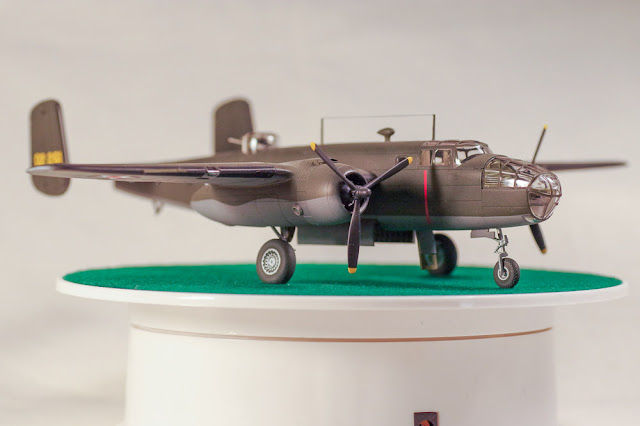It has been over a month since I posted something new. The time has partially been spent working on the Airfix B-25B “Doolittle Raid” version. There are lots of fit problems on that one. Along the way, I was getting bored and reached into the stash for a quick, fun build. This Hurricane kit caught my attention, so I started it. (These days, I am frequently building two models at a time. It keeps me interested in both projects.)
It was just a quick build, so no after market (even canopy masking) and no weathering. It is relaxing to build a model that way now and then.
This is a fabric covered wing Hurricane that was part of the British Expeditionary Force that vainly fought in France in May 1940.
The kit decals have alternate squadron markings for this ship, either VY*G or VY*C. The box cover and instructions show G rather than C. My library includes
Camouflage and Markings, R.A.F. Fighter Command, 1936-1945 by James Goulding and Robert Jones (Doubleday, 1971). This book has some of the most detailed information on this subject. And, it shows this aircraft in a profile drawing with “C”, so that is what I used.
I have a number of Squadron “In Action” and Bert Kinsey “Detail and Scale” books, as well as several dozen other publications. All of these were collected in the 1970’s through 1990’s. These books were much cheaper then, but, more importantly, the Internet had not bloomed and provided us with vast sources of information for the asking at our fingertips. I have added a couple of Brett Green’s superb books to my collection in the past few years, but that is it. I often wonder where the historic aircraft research book field will end up.
I painted the basic camouflage with Vallejo Model Air paint: 71.096 Panzer Olive and 71.032 Golden Brown. Maybe not exact prototype matches, but they look good to me and have some contrast.
Pros
Excellent subject and marking choice.
Excellent decals which go on easily and react well to Tamiya Mark-Fit regular strength decal setting solution.
Nice detailed cockpit and landing gear bays.
Surface detail is excellent, especially the recreation of the fabric covered areas of this aircraft.
Cons
Fit is an issue, as always, with these kits. Not really that bad on this one, but annoying in a modern kit.
 |
| The color guide is printed on the back of the box rather than in the instruction manual. |
As always, thank you for visiting my blog. Comments are always welcome.






































